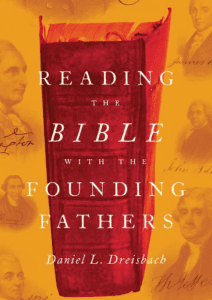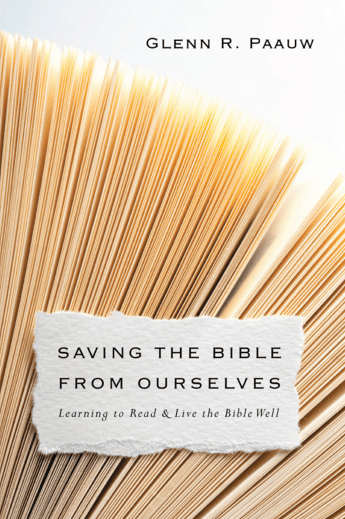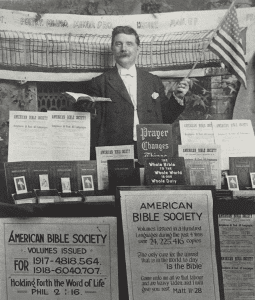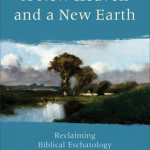 The introduction to the new book by Marc Brettler (Brandeis University), Peter Enns (Eastern University) and Daniel J. Harrington (Boston College), The Bible and the Believer: How to Read the Bible Critically & Religiously, provides a brief sketch of the history of biblical interpretation and the rise of historical criticism. The emphasis of this book is on the Hebrew Bible/Christian Old Testament with Marc Brettler providing a Jewish perspective, Peter Enns a Protestant perspective and Daniel Harrington a Catholic perspective. All three are both believers and biblical scholars.
The introduction to the new book by Marc Brettler (Brandeis University), Peter Enns (Eastern University) and Daniel J. Harrington (Boston College), The Bible and the Believer: How to Read the Bible Critically & Religiously, provides a brief sketch of the history of biblical interpretation and the rise of historical criticism. The emphasis of this book is on the Hebrew Bible/Christian Old Testament with Marc Brettler providing a Jewish perspective, Peter Enns a Protestant perspective and Daniel Harrington a Catholic perspective. All three are both believers and biblical scholars.
As a scholarly term biblical criticism does not have a negative or pejorative connotation – at least it need not have such a connotation. For the believer biblical criticism is broadly defined as “the process of establishing the original, contextual meaning of the biblical text and assessing their historical accuracy.” (p. 3)
“Historical criticism,” which means placing a biblical text in its original historical context, is our preferred term. Historical criticism often involves comparing the text with parallel or analogous biblical or extrabiblical texts from the same general geographical area and the same general time period. This helps us better understand what was “in the air” at the time and what may have been the cultural assumptions underlying the biblical texts, its authors, and earliest audiences. (p. 4)
The sketch of the history of biblical interpretation begins almost immediately after the writing of the earliest portions of the Hebrew scriptures. The later writers wrestle with and interpret the earlier texts. The inter-testamental authors wrestled with the text – as we see in works like those found among the Dead Sea scrolls. Large portions of the New Testament “can be regarded as an interpretative process of connecting Israel’s story with the story of Jesus’ life, death, and resurrection.” ( p. 11) This later point is important. Unless we understand the Old Testament, and the general cultural assumptions concerning the Hebrew Scriptures at play in the first century, we will almost certainly misinterpret large parts of the New Testament message. The New Testament authors, Brettler, Enns, and Harrington note, “quote the Old Testament well over 300 times and allude to it over a thousand times.” These are significant quotations and allusions, deeply entwined with the meaning the authors wishes to convey.
The reformation laid the groundwork for scholarly biblical criticism and the rise of skeptical biblical criticism. The reformation doctrine of sola scriptura required that the faithful believer pay close attention to what Scripture is actually saying. This also led to a political twist to biblical criticism. Biblical criticism moved out of the church and became a tool to undermine the authority of the church, and the authority of the state when church and state were intertwined. The deep enlightenment and modernist skepticism grew further and became tied to questions of science and faith – with miracles denied and the text demythologized. There is much more to this history – more in the brief sketch provided by Brettler, Enns and Harrington; and even more in the books suggested for Further Reading.
Out of this history though, there is perhaps a path forward. A path that does not ignore the results of textual criticism, source criticism, redaction criticism, historical criticism, but considers them critically in conversation with traditions of religious faith.
While we may sympathize at times with some of the critics on either side, we are convinced that it is possible to read the Bible both critically and religiously. Although historically it has been the case that “the scriptural Bible and the academic Bible are fundamentally different creations oriented toward rival interpretive communities,” we do not believe that this should be so. We used the broad understanding of historical criticism, proposed by scholars like John Barton, as outlined earlier: biblical criticism refers to the process of establishing the original contextual meaning of biblical texts with the tools of literary and historical analysis. Whatever challenges such study raises for religious belief are brought into conversation with religious tradition rather than deemed grounds for dismissing either that tradition or biblical criticism. (p. 18-19)
The next three or so posts will look at how this conversation between historical criticism and religious tradition plays out for Brettler’s Jewish approach, Harrington’s Catholic approach, and Enns’s Protestant approach.
What does it mean to use historical criticism in conversation with religious tradition?
Does the Protestant refrain of Sola Scriptura require that the conversation occur?
After all, if Scripture is our authority, whatever contributes to a a better understanding of scripture should help us better understand the faith.
Or does the Protestant refrain of Sola Scriptura relegate historical criticism to a back seat?
After all, the plain meaning of scripture should be accessible to anyone, anywhere, with only a moderate education required.
If you wish to contact me directly you may do so at rjs4mail[at]att.net
If interested you can subscribe to a full text feed of my posts at Musings on Science and Theology.















